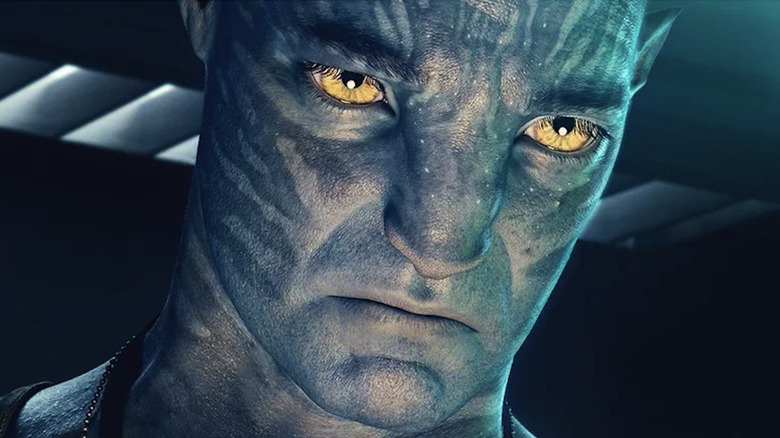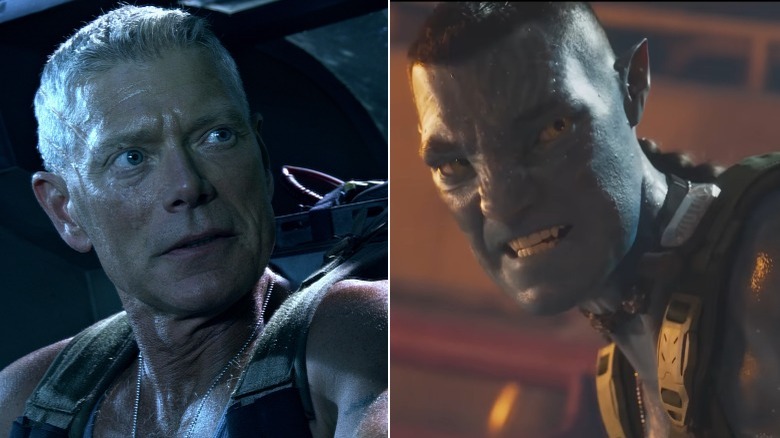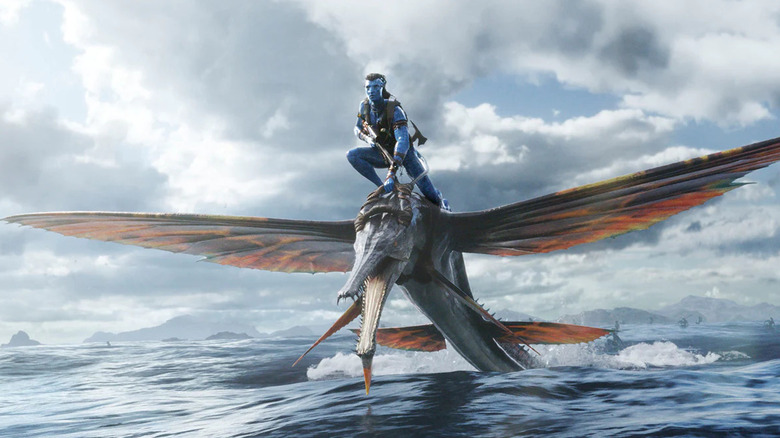The Avatar 2 Scene That Proves Humans Still Beat CGI
Making a serious splash with ticket-buying audiences during its feverishly anticipated big-screen debut, the special-effects-drenched "Avatar: The Way of Water" recently delivered the second-most-profitable Monday of the year for theaters, coming in just behind 2022's Monday box office champion, "Top Gun: Maverick" (via Deadline). Racking up roughly $150 million domestically since its December 16 opening, director James Cameron's big-budget sci-fi-action flick is also closing in on the $500 million mark globally.
Launching the viewing public on a return visit to the dream-like planet Pandora, "Avatar 2" delivers what is fundamentally a rehash of the original film's plotline, but with lots more water. Once again, we find the Indigenous, nature-loving Na'vi battling a fresh onslaught of brutal human invaders intent on attacking the place and ruining it the way they ruined the now-despoiled Earth.
Dominated by the eye-popping effects' wizardry made possible by the past decade's headlong developments in Computer Generated Imagery (CGI), the new movie gives us ex-Marine Jake Sully (Sam Worthington) now living full-time in his Na'vi avatar body, joined by his Na'vi mate Neytiri (Zoe Saldaña) and the couple's children. And, while the digitally-super-charged action of "Avatar: The Way of Water" seems to be going over just fine with many fans, one scene stands out amid the computer-driven imagery as a moment when an old-school, non-enhanced human actor would actually be a relief.
For a few critics and film fans, humans ALWAYS beat CGI
As noted in a number of "Avatar: The Way of Water" reviews, the CGI and other effects in the film were often fully immersive (per Rotten Tomatoes). But as GQ Magazine said, sometimes the digital hyper-manipulation became "something more of an erratic eyesore," before ultimately concluding that, "there is such thing, as it turns out, as a little too much."
One of the many times the special effects struck some as too much could lie in the simple visual impact of any human actor vs any pixelated actor. For a potential human-tops-CGI scene, for instance, there's Stephen Lang who portrays Colonel Miles Quaritch as well as CGI Quaritch in his Na'vi embodiment. When the human Quaritch emotes while looking into the camera during a scene, his humanity is on full display. But when his Na'vi avatar emotes, what's lost in the CGI-ness of the alien face is, ironically, a measure of true relatability for those of us in the audience who are actually, well, human.
Regarding the off-putting effect of the over-dazzling "Avatar 2" effects in general, one "Avatar 2" fan posting on Reddit remarked about the film's use of CGI and its associated high-frame-rates, writing, "The visuals were unreal, but ... the change in frames kept taking me in and out of the movie."
Avatar 2's digital magic isn't necessarily an unmitigated good
As a motion picture where the pixie dust touch of CGI can be detected to a greater or lesser extent in nearly every frame, "Avatar: The Way of Water" is first and foremost a demonstration of just how much can be achieved via digital sleight of hand. But as any dedicated movie buff (and even most casual viewers) can tell you, the use of special effects in films has a long and venerable history, especially in the realm of fantasy and science fiction. In this respect, many cinema gourmands would likely cite the original 1933 "King Kong" and its then-revolutionary advance in the art of frame-by-frame stop-motion animation as a landmark moment in the use of effects (via Inverse).
And while it's clearly a vast techno-leap from Kong's rabbit-fur skin on an aluminum armature to "Avatar 2" and its photorealistic oceanic vistas and whale-like Tulkun denizens, the truth is not every jump in filmic technology is going to please every movie-goer all the time. Such seems to be the case for some "Avatar 2" ticket buyers who, for a variety of reasons, find some of the CGI and other effects in James Cameron's new journey to Pandora less than altogether successful or enjoyable as a viewing experience.


